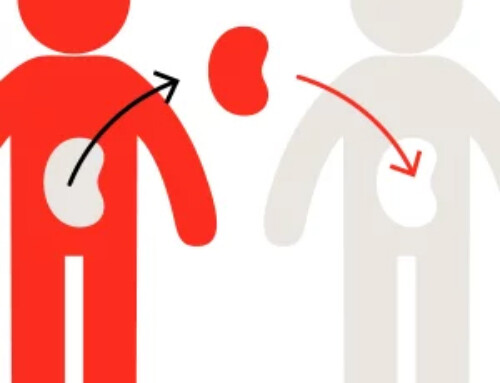Community Hospital Management of Renal Transplant Patients
Kidney transplants are good. Messing up a kidney transplant is bad. As a nephrologist at a non transplant hospital this is an issue I fear. Maybe I fear it too much, more than necessary, but I fear it nonetheless. Here is my opinion.
Going to break this down into two important issues: Triage and Immunosuppression Management.
Triage
Some patients should be transferred immediately to the transplant center. Some can be co-managed by the community hospital nephrologist and transplant center nephrologist and some can be monitored by the community hospital nephrologist.
*** In today’s world the availability of hospital beds often is not sufficient to meet demand. There may be a delay from when the patient is accepted in transfer and the transfer occurs. In these cases the patient still needs to be managed. The triage should default to nephrology co-management pending transfer. In this communication there can be discussions to make the transfer “high priority” as appropriate.***
- 0-3 months post transplant. Transfer directly from ER to transplant center. Hospitalization at community hospital inappropriate. Transplant surgical management required. Direct communication with on-call transplant surgery regarding transfer should occur.
- 3-12 months post transplant. Transfer directly from ER to transplant center if patient has AKI. Risk of acute rejection highest in the first year.
- All other cases: Direct communication with the transplant center to formulate a plan. Can consider local hospitalization on a case by case basis only after direct communication with transplant center
Immunosuppression
Typical medications are:
- Calcineurin inhibitors – (tacrolimus or cyclosporine)
- Anti-metabolite – (typically mycophenolate, rarely azathioprine)
- Steroids – (prednisone)
Most patients are either on a 2 drug steroid free regimen (tacrolimus and mycophenolate) or all 3 drugs (tacrolimus, mycophenolate, and low dose prednisone).
- Jefferson typically uses the tacrolimus/mycophenolate (steroid free) regimen.
- Penn typically uses the 3 drug tacrolimus/mycophenolate/prednisone regimen.
Tacrolimus
- Most important immunosuppression medication.
- Tacrolimus immediate release (Prograf). Given q 12 hrs (not bid), typically 9 am and 9 pm
- Tacrolimus extended release (Envarsus) is given daily, typically 9 am
- THE DOSES ARE NOT EQUIVALENT. TACROLIMUS ER (ENVARSUS) = 80% OF TOTAL DAILY TACROLIMUS DOSE
Example: Patient on Envarsus 4 mg day. Med not on formulary. Tacrolimus dose 2.5 mg q 12 hrs. (round to nearest 0.5 mg). Pharmacy should know this conversion
- TACROLIMUS SHOULD NOT BE HELD WITHOUT NEPHROLOGY APPROVAL
Patient NPO. It still must be given. If a patient can not take capsule or liquid (orally or via tube) then the contents (powder) of the capsule should be given sublingually.
- TACROLIMUS HAS MANY DRUG INTERACTIONS:
Most common:
- Nondihydropyridine calcium channel blockers (diltiazem/ verapamil).
- Azole antifungals (fluconazole, voriconazole, posaconazole).
These raise tacrolimus levels. They should not be initiated (or if on diltiazem as outpatient) discontinued or dose changed without conferring with transplant center and close follow up of levels.
- TACROLIMUS LEVELS:
This is an AM trough level. Target typically 5-7 for chronic transplant patients (> 1 year post transplant). If the level is not in target range check timing of medication administration and lab draw to ensure that it was a true (11-12 hr) trough.
Significantly elevated levels may cause tacrolimus toxicity manifesting with tremor and AKI.
Mycophenolate
Formulations:
- Mycophenolate Mofetil (MMF, Cellcept)
- Mycophenolic acid (MPA, Myfortic)
- Dose conversion: 250 mg Mycophenolate Mofetil (Cellcept) = 180 mg Mycophenolic acid (Myfortic)
- May be given IV
- PO- IV Mycophenolate Mofetil dose conversion 1:1
Typical doses:
- Cellcept/MMF 250-500 (Myfortic/MPA 180-360) mg twice daily if patient on 3 drug regimen (with tacrolimus and prednisone)
- Cellcept/MMF 750 (Myfortic/MPA 540) mg twice daily if on 2 drug (steroid free regimen)
Side Effects:
- GI: especially diarrhea. Mycophenolic acid may have less GI side effects than Mycophenolate Mofetil
- Especially Leukopenia
Pearl: If a transplant patient has leukopenia put CMV disease in your differential and consider checking a CMV PCR
Mycophenolate may be held acutely in patients with severe infection or side effects. It has been commonplace to do this with COVID. However, in my opinion patients must be maintained on the 2 other immunosuppressive medications (tacrolimus and steroids). If the patient is on a steroid free regimen then add steroids (which initially may be the IV decadron in a COVID patient, followed by oral prednisone) while MMF is held. If this is done it is best to have consultation/ communication with the transplant center. Some transplant nephrologists may be comfortable using tacrolimus alone for a short period of time in an acutely ill transplant patient, but I’m not a transplant nephrologist, this isn’t a transplant center, and I’m not comfortable with it. My advice is don’t do it.
Steroids
Prednisone:
- Typical maintenance dose is 5 mg per day. Some patients may be on 10 mg every other day.
- Give IV if needed.
- Prophylactic/empiric stress dose steroids are typically not required.
Summary: There you have it. Be mindful of the appropriate triage and management of immunosuppression when caring for a patient with a kidney transplant at a community hospital.

